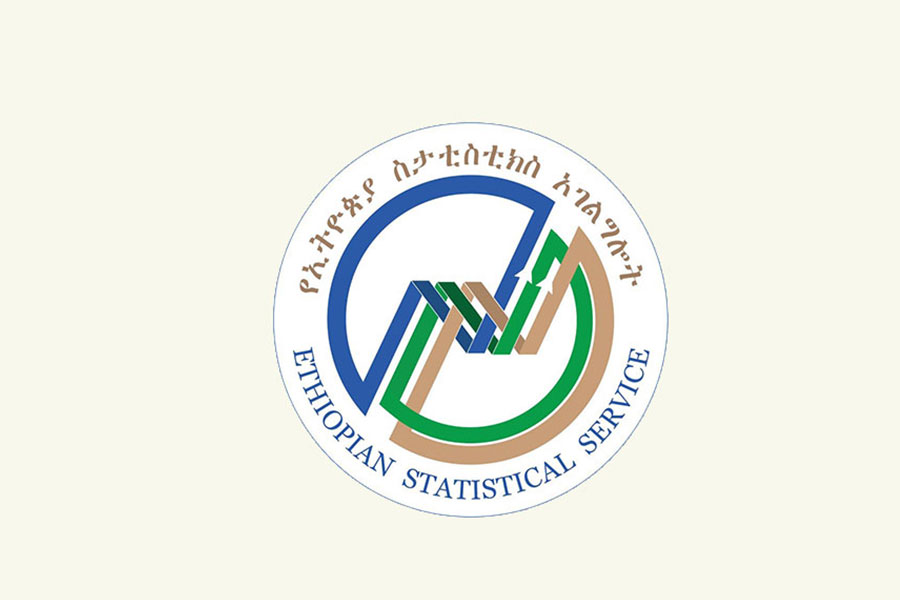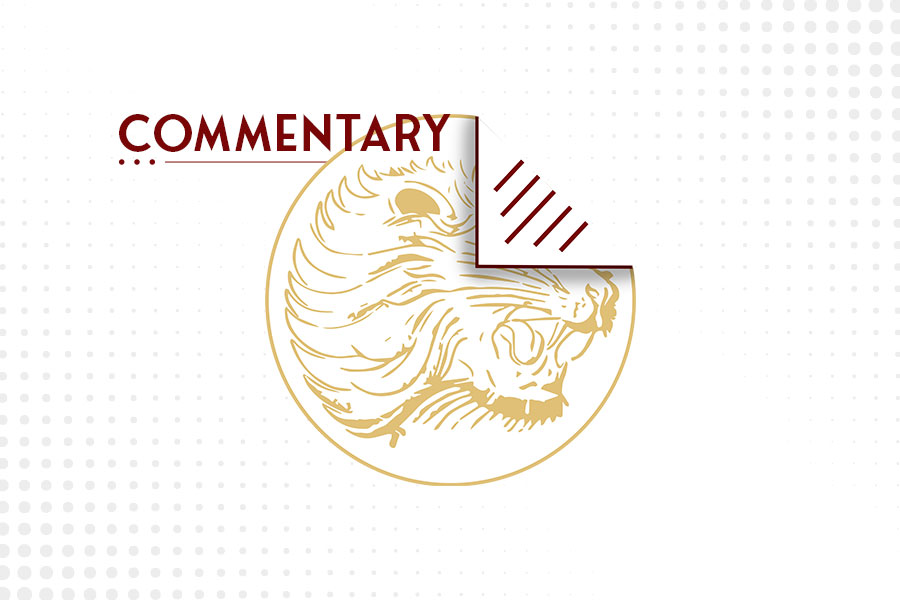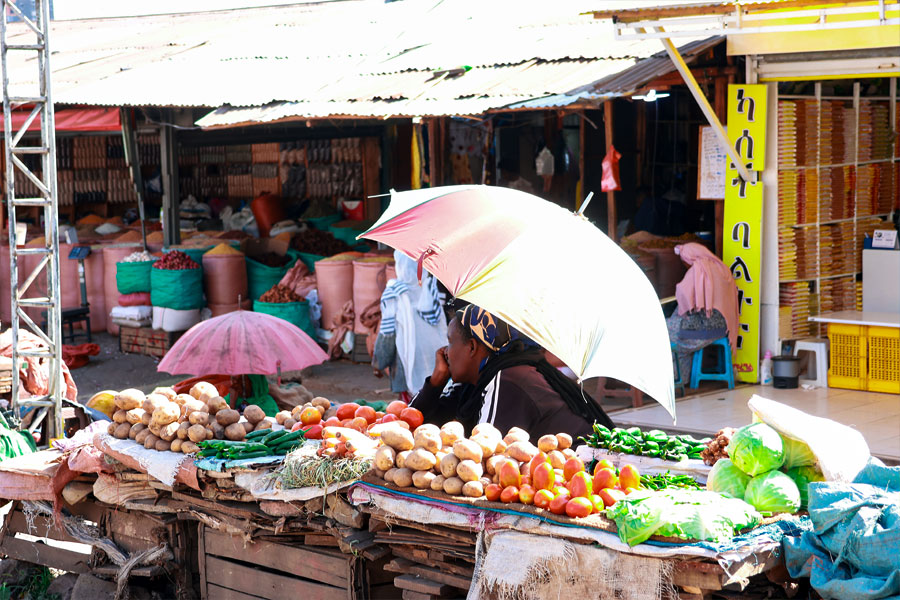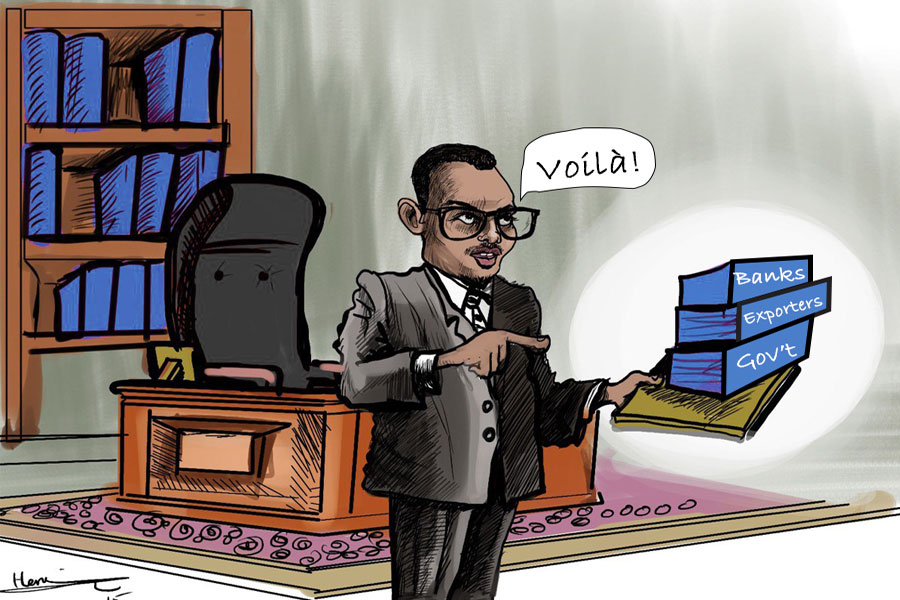
News Analysis | Mar 04,2023
Feb 10 , 2024.
In a last week session before Parliament, Prime Minister Abiy Ahmed (PhD) was seen adopting a tone of conciliation on several issues that also showed his administration's economic policy dilemmas. Yet he conspicuously omitted to raise some of the country's most pressing problems. Neither were the legislators of the views that issues of budget deficits, ways of financing them, the precarious state of foreign currency reserves, and the widening gap between official and parallel exchange rates were worthy of discussion.
However, he acknowledged the failure of monetary policy measures to curb inflation. His Central Bank Governor, Mamo Miheretu, may be ambitious to see inflation fall below 20pc. It remains stubborn, standing at a year-on-year rate of 28.7pc for December 2023, marginally higher than the previous month.
The Prime Minister's remarks came against a backdrop of economic uncertainty, with fiscal challenges mounting. He hinted at "short-term" policy adjustments, likely painful, that are anticipated but were not elaborated upon. These remarks came at a moment when the International Monetary Fund's (IMF) involvement remains crucial, with a scheduled visit by the IMF team to Addis Abeba postponed, leaving significant economic issues unaddressed. The team could come back late this month, if only Ethiopia's negotiators are ready and determined to put their offers on the table.
At first glance, Ethiopia's debt ratio might not set off alarm bells, especially when compared to global benchmarks. That much, the Prime Minister alluded to Parliament last week. However, the United States, having the largest economy in the world, has a public debt level larger than its economic pie, which should be a reason to make policymakers elsewhere complacent about their people’s plight.
The devil, as always, is in the details.
Central to the discussions with the IMF is the public debt, which is approximately 38.7pc of its GDP as of September 2023. While not alarming on a global scale, the amount obscures the nuanced problems of balancing domestic and external obligations amidst political, security, and geopolitical storms hovering over the country. The authorities are keen to see Ethiopia's debt structure, with a 44pc external component, as a reflection of their attempt to reduce foreign exchange risks and dependence on external creditors. However, this strategy exposes the turbulent waters of international finance.
Abiy spoke of his administration's show of prudence by limiting new external borrowings and focusing on managing the country's debt portfolio, particularly reducing reliance on Chinese creditors. The cautious approach is evidenced by a hiatus in new loan agreements in the third quarter of 2023. This move appears to be a period of consolidation in the public debt management efforts. The suspension of external debt service payments under the G20 Debt Service Suspension Initiative (DSSI) provided temporary relief, allowing the government to reallocate resources towards addressing the economic impacts of the COVID-19 pandemic.
However, the end of this suspension brought the country back to steer fiscal constraints without this buffer.
Economic growth has slowed, with real GDP growth averaging six percent over the past three years, a decline from the nine percent growth rate experienced before 2019. The fiscal deficit has widened, and inflationary pressures have mounted, partly due to financing deficits through banking system advances. A significant balance of payments deficit, exacerbated by a surge in imports and a reduction in development aid, has put additional strain on the economy, leading to a significant drawdown of foreign currency reserves of lower than 1.5 billion dollars. It is sufficient to cover less than a month's import bills. Commercial banks held a mere 1.2 billion dollars in foreign currency assets.
The balance of payments continued to get stressed, though the rate of import growth decelerated. Contrarily, export earnings began to decline, and the financial inflow from grants and loans remained subdued. The servicing of foreign debt persisted as a substantial outflow, further straining the foreign exchange reserves. The reserves at the central bank had diminished to below 1.5 billion dollars,
The disparity between the official and parallel exchange rates has become increasingly pronounced, with the official rate at 57.3 Br to the dollar, while the parallel market rate has soared to over 120 Br.
The authorities' approach to managing the currency disparity shares similarities with other African countries like Ghana, Zambia, Nigeria, and South Sudan. Ghana's efforts to improve market transparency and Nigeria's struggle with multiple exchange rate regimes offer insights into the dilemma of economic stabilisation and the quest for exchange rate unification and external debt servicing.
Despite assertions by officials like Eyob Tekalegn (PhD), state minister for Finance, that the country faces liquidity rather than solvency issues, the servicing costs of external debt consume more than 22pc of export revenues, exceeding the IMF's recommended ceiling. The strain has led to Ethiopia defaulting on part of its obligations for a one billion Eurobond maturing this year, with debt servicing costs projected to reach four billion dollars in 2025.
Domestic resource mobilisation remains a critical area where the federal government lags, with tax revenue below 10pc of GDP. The country's reliance on gross national savings falls short of meeting its investment needs, further compounding fiscal pressures. Defence and debt services consume a significant portion of the budget, highlighting skewed spending priorities at a time when there is an urgent need for humanitarian and development funding. The national plan for humanitarian responses for 2024 alone calls for nearly three billion dollars in spending to feed two-thirds of the 20 million people in need of food aid.
The global community's role through mechanisms like debt relief and development financing will be crucial in supporting Ethiopia's recovery and growth. The United Nations suggests a 30pc reduction in the external debt stock for debt-vulnerable economies could significantly lower debt service payments, providing fiscal relief for countries like Ethiopia.
In the face of these challenges, Ethiopia has introduced new debt instruments and increased domestic debt, including the mandatory purchase of five-year treasury bonds by commercial banks. This indicates an effort to diversify funding sources and manage debt sustainably. However, the persistence of export-related vulnerabilities and the significant proportion of debt attributed to state-owned enterprises (SOE) compels ongoing reform and efficient debt management.
The engagement with the IMF pushing for the liberalisation of the foreign exchange market uncovers the tough choices facing the policymakers. The dilemma of whether to embrace painful reforms or face prolonged economic unravelling shows the critical juncture at which Ethiopia stands. The authorities' resolve to negotiate with international partners in a sense of urgency and their commitment to reform the forex regime will play a decisive role in determining the country's economic path in the years to come.
PUBLISHED ON
Feb 10,2024 [ VOL
24 , NO
1241]

News Analysis | Mar 04,2023

Commentaries | Mar 25,2023

Agenda | May 04,2025

Radar | Jun 04,2022

Radar | Jun 21,2025

Commentaries | Apr 15,2023

Radar | Dec 11,2021

Agenda | Dec 09,2023

Editorial | Aug 19,2023

Agenda | Sep 04,2021

My Opinion | 131547 Views | Aug 14,2021

My Opinion | 127902 Views | Aug 21,2021

My Opinion | 125878 Views | Sep 10,2021

My Opinion | 123508 Views | Aug 07,2021

Dec 22 , 2024 . By TIZITA SHEWAFERAW
Charged with transforming colossal state-owned enterprises into modern and competitiv...

Aug 18 , 2024 . By AKSAH ITALO
Although predictable Yonas Zerihun's job in the ride-hailing service is not immune to...

Jul 28 , 2024 . By TIZITA SHEWAFERAW
Unhabitual, perhaps too many, Samuel Gebreyohannes, 38, used to occasionally enjoy a couple of beers at breakfast. However, he recently swit...

Jul 13 , 2024 . By AKSAH ITALO
Investors who rely on tractors, trucks, and field vehicles for commuting, transporting commodities, and f...

Jun 29 , 2025
Addis Abeba's first rains have coincided with a sweeping rise in private school tuition, prompting the city's education...

Jun 29 , 2025 . By BEZAWIT HULUAGER
Central Bank Governor Mamo Mihretu claimed a bold reconfiguration of monetary policy...

Jun 29 , 2025 . By BEZAWIT HULUAGER
The federal government is betting on a sweeping overhaul of the driver licensing regi...

Jun 29 , 2025 . By NAHOM AYELE
Gadaa Bank has listed 1.2 million shares on the Ethiopian Securities Exchange (ESX),...